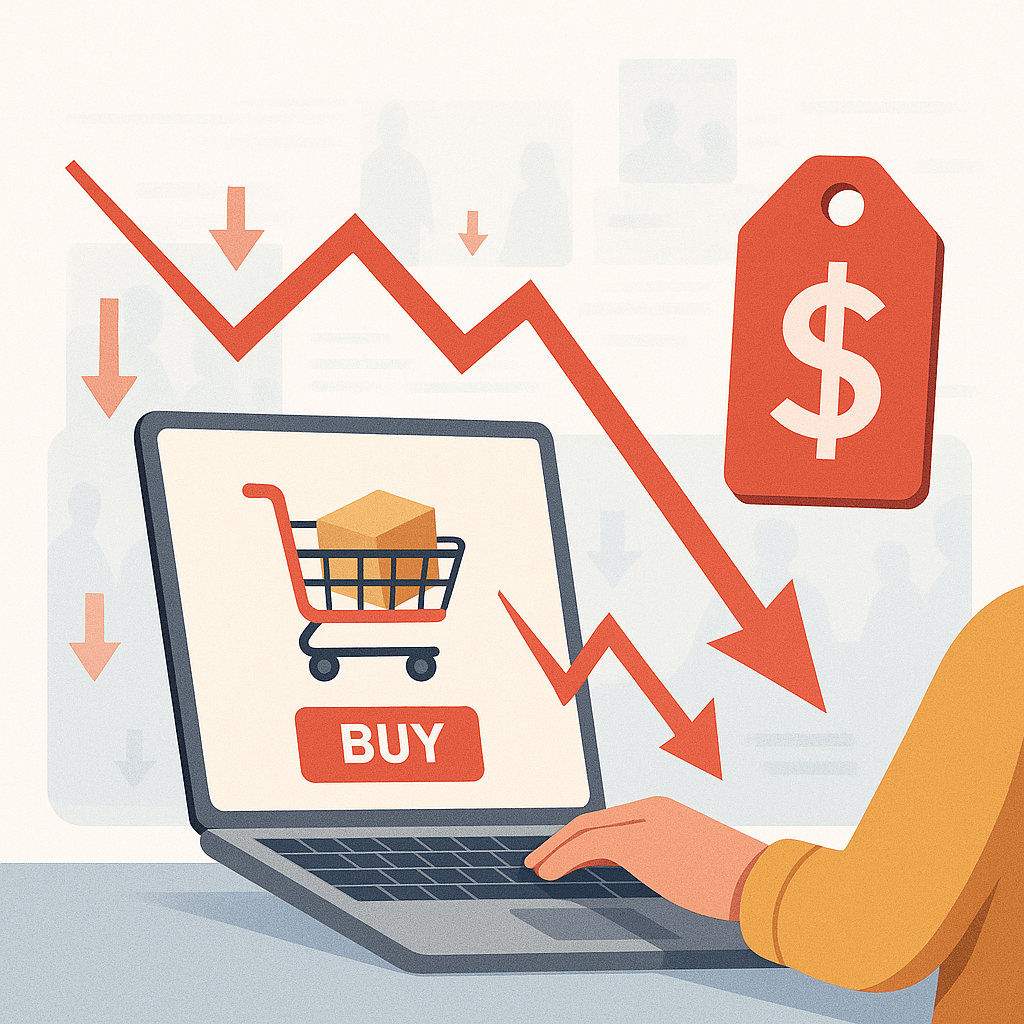Originally published on IMRG as part of their Solution Partner Insight Series (July 2025). This version has been adapted for Price Trakker readers.
Why Price Moves Matter More Than Ever
In a crowded online retail market, a competitor’s price change can quickly tilt the balance between winning and losing a sale.
Simulations based on IMRG Retail Index data show that conversion rates can jump by up to 12 percentage points within just 48 hours of a major category leader reducing their price.
Shoppers are constantly comparing across tabs and price search engines, which often favour the lowest offer. That means even a short delay in reacting can lead to lost revenue or squeezed margins.
The Numbers Behind the Problem
Over a 12week period, three UK retailers were monitored before and after introducing highfrequency price checks.
- Before automation: Around 35 missed competitor price changes per week.
- After twohourly checks: Missed changes dropped by more than 90%.
When paired with IMRG conversion rate patterns, the model revealed a clear benefit — timely alerts significantly reduced lost sales across highsensitivity categories like electronics, fashion, and homeware.
Hidden Costs of Delayed Pricing
Missing a market move has consequences beyond the immediate lost sale:
- Overdiscounting: Rushed markdowns that go deeper than necessary, training customers to wait for lower prices.
- Search rank loss: Paid ads become more expensive as competitors gain top placement with better prices.
- Stock misalignment: Bestsellers are overdiscounted while slow movers stay untouched.
- Customer service strain: More pricematch queries and abandoned baskets.
From Reactive to Proactive
Retailers seeing the best results are:
- Monitoring their top 20% of SKUs by revenue most closely.
- Running granular checks every 2 hours on competitive lines.
- Using rulebased pricing engines that combine competitor data with stock age and margin thresholds.
- Acting only on exception alerts to focus time where it counts.
Case Study: Sportswear Retailer Gains £96,000 Profit
In March 2025, a UK sportswear brand switched from weekly manual checks to automated twohourly monitoring.
- Within days, they corrected 30% of core footwear lines that were overpriced versus the market.
- Small, targeted price drops of 1–2% lifted conversions from 2.1% to 3.8%, adding £96,000 in gross profit in the following quarter.
- Alerts also revealed opportunities to increase prices on 8 items without losing the buy box.
Technology as the Enabler
Tools now in use include:
- Web crawlers that detect price changes in nearreal time.
- Rule engines that blend cost, margin, and competitive position.
- Dashboards highlighting priority products for action.
The aim is not to chase every change — but to act where it matters.
FAQs for Retailers
Q: How much can conversion rates increase after a competitor’s price drop?
A: Up to 12 percentage points within 48 hours, according to IMRG Retail Index simulations.
Q: Which products should I focus on for price monitoring?
A: Start with the top 20% of SKUs by revenue — they’re typically the most price sensitive.
Q: Is price monitoring only about lowering prices?
A: No — accurate data can also identify products where prices can be raised without losing market share.
Key Takeaway
- Missing one major price move can cost thousands in sales or margin.
- Live competitor pricing data, combined with smart business rules, enables faster, more profitable action.
- ROI can often be achieved in under eight weeks when focusing on highimpact SKUs.

